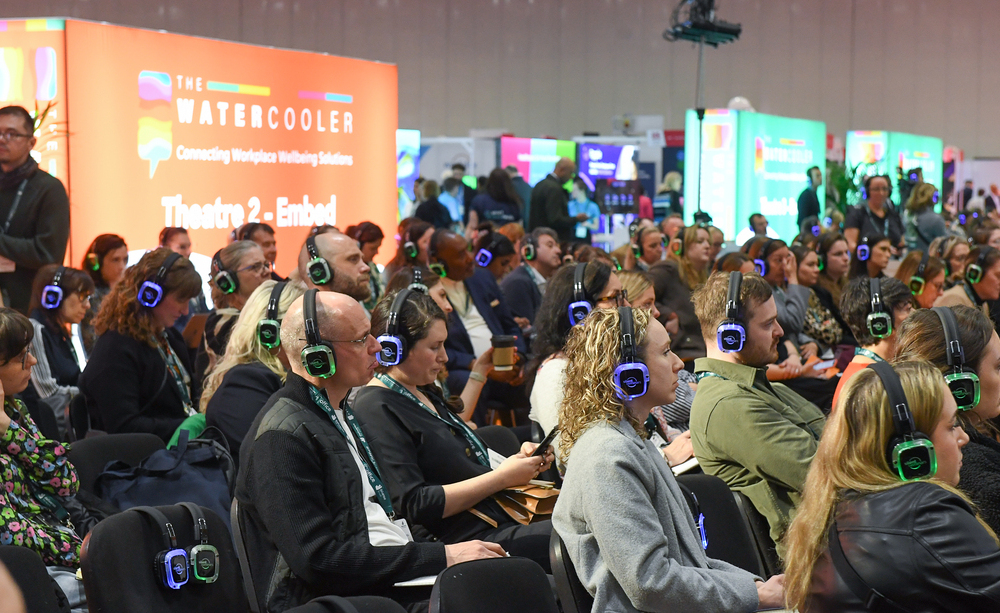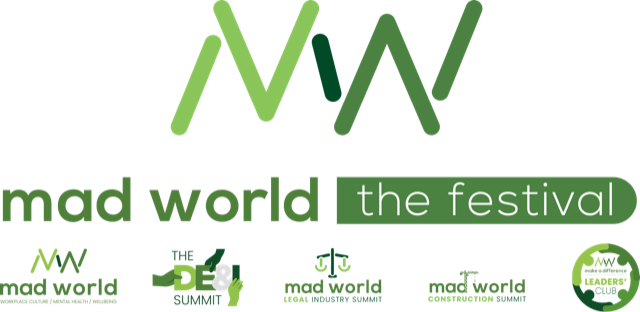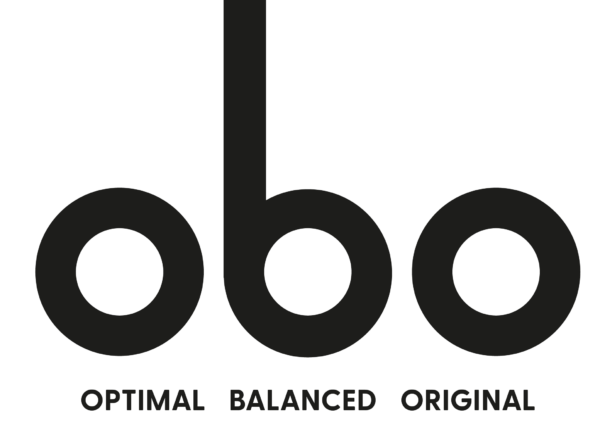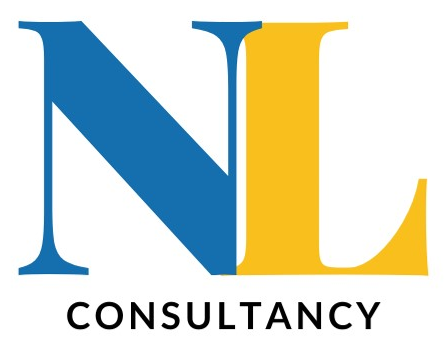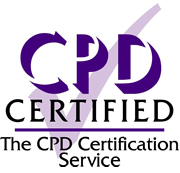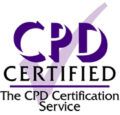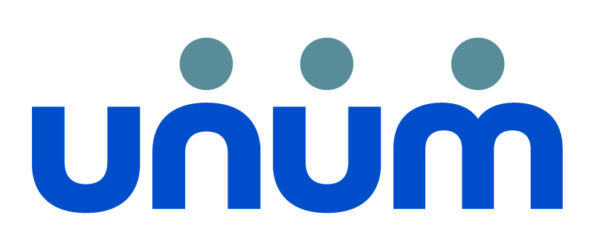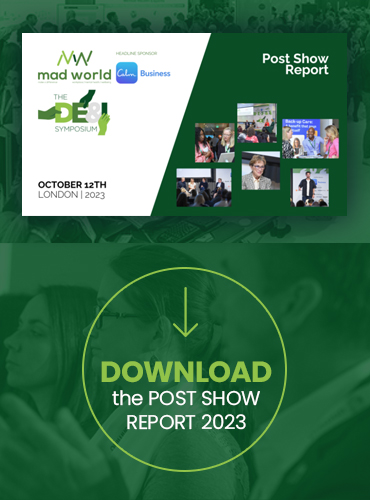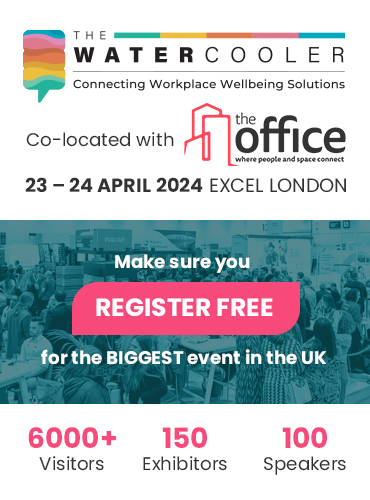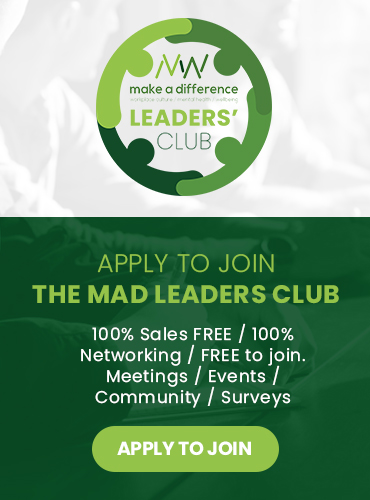The 6th annual MAD World Summit
After months of eager anticipation, the annual MAD World Summit came to life in person on October 12th in the heart of Central London. The event was a resounding success, with 970 attendees exploring inclusive workplace culture, mental health, and wellbeing content and solutions. With a diverse array of over 140 speakers, the summit proved to be a remarkable meeting of cross-sector employers in pursuit of insights and inspiration.
The MAD World Summit, renowned for its thought leadership in mental health and diversity, delivered a truly memorable experience this year. Attendees from various sectors came together to engage in conversations, share knowledge, and find solutions that promote a more inclusive and mentally healthy workplace.
One of the standout features of this year’s event was the inauguration of the Diversity, Equity, and Inclusion (DE&I) Summit. This addition emphasised the growing significance of DE&I in today’s workplace landscape and provided a dedicated space for exploring the synergies between mental health, diversity, and workplace culture.
The MAD World Summit 2023 was a celebration of insights, inspiration, and collaboration, and it set the stage for positive change in the realm of employee mental health & wellbeing, diversity, and workplace culture. It’s an event that will leave a lasting impact on the way organisations approach these vital topics. 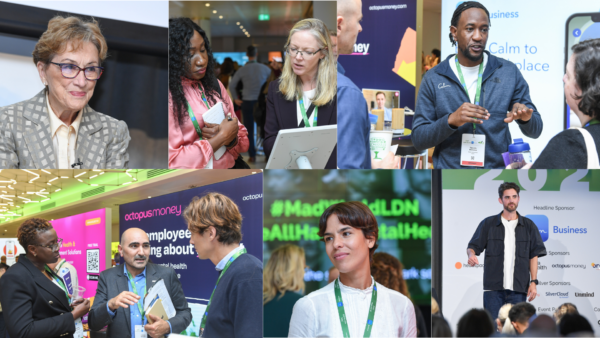
Key topics to be discussed:
- What you need to know to invest wisely in workplace wellbeing
- Wellbeing washing: – what it is, why it matters and how to overcome it
- The future of work through the lens of workplace culture, mental health and wellbeing
- Meeting the wellbeing needs of different working demographics in a hybrid world of work
- Safeguarding the health of the nation – getting people back to work effectively
- Creating a leadership playbook for a mentally-well organisation
- Measurement of workplace wellbeing – using data to elevate your strategy
Next year, the MAD World Summit will take place on October 17th, 2024. If you are interested in participating.
We'll Be Sharing
Latest Make A Difference News

Burnout in the workplace can manifest itself in a number of ways. Some people remove themselves from the situation by calling sick. Some people become disengaged and unmotivated. Some people push themselves too hard until things reach a breaking point. All of these could be signs of burnout, but do you know how to support your team, and try to stop it happening in the first place?
New research from Indeed Flex reveals that the number of UK workers experiencing workplace stress or burnout has doubled in 2023 compared to the previous year. A staggering 92% of UK employees have admitted to facing these challenges during their careers, with post- pandemic labour shortages intensifying workloads.
Worryingly, 19% of workers have already suffered from burnout or stress in 2024 so far.

The primary factor behind the escalating burnout and stress levels is higher workloads, with 58% of workers citing this as the root cause, while 42% say it’s due to persistent staff shortages. Meanwhile, a third (34%) of employees say their stress and burnout is due to pressure from bosses to work overtime and extend their hours.
Over a third of workers (34%) say they have called in sick as a result of burnout, nearly a quarter (23%) have taken time off using their annual leave and 16% have been signed off work due to the effect on their mental health.
Seeing these figures, workplace managers should now be considering how to identify the early signs of burnout in their colleagues, and how to ensure the right support is in place. We have put together a list of the early signs to look out for, and some tips to keep burnout at bay.
- Taking recurring time off for issues such as stomach problems or migraines
- Feeling overwhelmed by small tasks
- Lack of sleep
- Possible increased use of alcohol or recreational drugs
- Loss of engagement or creativity
- Becoming isolated or refusing social activity
Tips to avoid burnout in the workplace
Take a break
It might seem obvious, but taking a break from work is the best way to avoid burnout. Since we’re now surrounded by the internet and mobile phones with 24/7 access to work emails, it’s easy to fall into the trap of not switching off when you head home for the day. If this is the case, why not consider booking some time off and recharging your batteries?

Travelling and changing up your environment is a great way to reset the mind and, when you return to work, you’re likely to be filled with new energy. Make sure to leave your laptop at home to avoid the temptation of checking in with the office whilst you’re away. Do something that makes you feel good and helps you unwind, such as booking tickets to see your favourite band perform live or enjoying an outdoor festival to take in both the music and the atmosphere.
If taking time off just isn’t an option, a meaningful break in the middle of the day can do wonders. When eating your lunch whilst replying to an overflowing inbox becomes a regular event, your brain doesn’t get time to recuperate and relax during the day. So, why not try plugging in some headphones and taking a walk during your lunch break? Listening to slow, quiet music can physically de-stress the body, lowering blood pressure, slowing your pulse and reducing levels of stress hormones.
Adopt a fitness regime
When you’ve got a lot to think about, the gym is probably the last thing on your mind. When busy, most of us throw exercise to the bottom of our priority list but working out can reduce stress. Exercise also helps to reduce fatigue, while improving alertness and concentration, meaning you can go back into your workload with a fresh pair of eyes.
Even if you don’t fancy an intense gym session or a lengthy run, just taking a walk outdoors and getting some fresh air is proven to improve cognitive function. Put on a playlist of your favourite upbeat music to get you motivated or take it down a notch with some calmer tunes to help you de-stress whilst doing some simple stretching or yoga. If group exercise is more your thing, why not try a dance class or Zumba session? Music has been shown to be a highly beneficial aid to mindset and motivation when exercising.
Asking for help
Delegating some of your task-list is a great way to offload some stress, but we can find it difficult to give up some of our responsibilities. Asking for help is never easy, especially if you’re an ‘I’ll do it on my own’ type of person. You are, however, more likely to get things done and find solutions if you’re not the only person thinking about the problem. It never hurts to admit that you’re over capacity, and it can do wonders for your mental wellbeing.

Making sure that you stay on top of burnout and can recognise the warning signs is important, but it’s not the only way that you can make your working life easier. Finding ways to boost your productivity at work and identifying your particular working style is also helpful for keeping burnout at bay and keeping on top of your own mental health.

Supporting your people through burnout
While one speaker started by lamenting the lack of a crystal ball to predict the future, we reckon this session gave an excellent guess at big trends to watch when considering the future of work and how that impacts on wellbeing.
Arguably, with technology accelerating at a quicker pace than ever before (hello, AI) and the workplace transforming at an unprecedented rate (thank you, global pandemic) this topic is more front of mind than it’s ever been.
We’ve rounded up the key insights that this esteemed panel – Nicola Millard, Principal Innovation Partner, BT Group, James Hurrell, Managing Director, Wincanton and Caroline Andrews Chief People Officer, IAG Cargo – believe will be the most important in shaping what work will look like:
- A continued drive towards flexibility
- An increasingly emotionally intelligent leadership
- An aging workforce
- AI/ robotics
1. A continued drive towards flexibility
The pandemic changed the face of work overnight in terms of flexibility and the homeworking revolution. Now, says Millard, we are in a “really interesting state of flux”.
There’s often a “struggle between employers wanting people back in the office and employees maybe being slightly more reluctant to come back”. The challenge going forward for companies, as she says, will be finding the combination which works best, which she predicts for the vast majority will be hybrid working:
“We’re in an interesting situation at the moment in terms of trying to feel our way through these new ways of working. In some senses, the traditional ways of working are almost colliding with some of the newer ways of working and we’re still trying to figure out how to make work work.”
Tension between management homeworkers and onsite workers
For her, success comes back to analysing the data and “cutting through some of the emotive stuff” to find what is working best.
As Hurrell pointed out in some cases, there can be a tension between the ability to offer more flexible homeworking options to the management staff, which can’t be offered to those employees who need to be on site, like warehouse workers in his case. The big challenge here going forward is to, he says, “be really mindful that we don’t want to have a culture where some colleagues are in the depots, doing the work, and the management are at home on Microsoft Teams because that doesn’t work”. Employers need, in these cases, to find a way to “connect the two” and “create a collective purpose”.
Days of ‘what’s in the contract?’ are over
As for Andrews, she believes that “there’s a different degree of confidence amongst employees to articulate what works for them and what they’re looking for from an employer; so the days of it being about ‘what is a reasonable request and what’s in the contract?’ are over,” she says. As a result, if employers want to attract and retain top talent they must, she says, forge “an emotional connection with employees to unlock a level of goodwill to really make that difference”.
But this employee demand for flexibility isn’t just around location or hours, it’s increasingly manifesting in things like wellbeing benefits and policies too. “It’s about recognising how lifestles and the way in which people do things, including in their personal lives, has changed and how they influence your benefit offering. One of the things we’ve done, for example, is introduce a 24/7 GP service to support colleagues,” she says.
2. An increasingly emotionally intelligent leadership
Related to this new tension between the employer and employee around flexibility is the issue of culture and the reality that this is driven – not by policies or packages – but ultimately by leadership. So, to forge this required emotional connection with employees in today’s world of work leaders need to be “upskilled” says Andrews to be able to listen to and meet their needs.
“Without those leadership skills, and people management skills, that enable the needs of both employees and the organisation to be met in a really cohesive way, it’s going to be very difficult to compete effectively because of the war on talent,” she says.
Leadership struggling
Millard agrees, saying “leadership is definitely one of the things that we’re seeing a lot of organisations struggle with, particularly leaders that are having to lead teams that they don’t necessarily see on a regular basis”. As she says, the hybrid model is a complex one to “get right” and that is what employers are grappling with now.
‘Messy’ meetings
Currently, as we work towards a future that works, some of the ways of working definitely aren’t working – she gives the example of “messy” hybrid meetings with some employees in an office at work and some dialing in from home. She recalls situations where the “virtual” people are forgotten and end up messaging each other in the chat, underlying the teething issues happening now in hybrid.
Again, leadership is a challenge here, she says: “To be honest, we don’t teach our leaders to moderate meetings in the real world very well, so how do we actually then teach them to manage that extra level of complexity and orchestrate and moderate a hybrid meeting? That is a microcosm of some of the challenges we are struggling with in terms of leadership”.
3. An aging workforce
“I think the big disruptor is actually, potentially, retirement age,” says Millard.
She explains that, as we are having longer working lives, the normal “linear” progression that we’re used to changes significantly. We’re used to, for example, getting a lot of training and education at the beginning of our working lives but – as Millard asks – “if that linear path is disrupted, what does that mean? Does it mean continuous retraining during a career? Does it mean retiring a lot later? Will that have a huge implication on employers?”
Helping employees thrive and be future-fit
Andrews is already tackling this issue with an intentional focus on “how to multiscale certain populations in our organisation”: “That means giving them the ability to have fit-for-future skills and capabilities which will really help us evolve in an efficient way to meet our organisational needs”.
She touches on a key wellbeing issue here: the need to develop employees so they feel like they are building skills as well as valued:
“So, at one end of the spectrum it’s about how do you support employees working beyond traditional retirement age? Then at the other end of the spectrum, it’s about growing your emerging talent, and how you cater for that and for the challenges and tensions between different populations.”
4. AI/ robotics
Of course, AI (artificial intelligence) is another big disruptor which will also impact on the skills employees will need to thrive in future.
“In the ideal situation, AI takes away the boring and mundane work and allows us to do the more interesting, really human work,” says Millard. AI is actually going to make “human skills” much more important in future “because those are the skills that AI doesn’t do very well”.
AI means human tasks are more complex
This also affects the training and development issue, relevant to both employee wellbeing and organisational success: employees need to be upskilled to work most effectively with new tech like AI. “Also, with humans collaborating a lot more with AI there are lots of other layers around how we think about work, maybe in a slightly different way”.
Another massive impact of AI in terms of skills is that – as the tech scoops up the more repetitive, mundane, automatic tasks – humans are left with the much more “complex and emotive” work, says Millard. Talking in the context of contact centres, she explains that:
“You need people who are experts in their field and good at talking to people because a fair portion of that can’t be automated and we’re seeing a lot of what we term ‘customers in crisis’ at the moment particularly in areas like utilities and financial services, where people are struggling financially and they’re contacting the organiasation in extreme distress. It’s very difficult to automate that.”
Employees need support with AI info overload
So, in future, rather than take human jobs, AI is actually paving the way for jobs which are “alot more complex and a lot more human”, says Millard. Andrews has seen the same – human judgment rising in importance – because of AI.
She’s also seen a growing need to support employees using AI to manage the “extraordinary” amount of information now being generated, leading to the launch of a new ‘learning academy’ as a commitment to continuous learning.
The robots are here, and we’re loving them!
As for Hurrell, his focus has been on robotics. Initially worried about employees feeling the “robots were coming to take their jobs”, their introduction has been embraced by colleagues and led to the creation of some new roles around engineering and technology.
For now, at least, humans and robots are working in harmony, says Hurrell: “It’s fascinated and excited our people. We do tend to have fairly high attrition in a warehouse environment but not a single colleague in the Rochdale team, whose worked with the robots, has left. Not a single one, which is quite remarkable!”
You also might like:
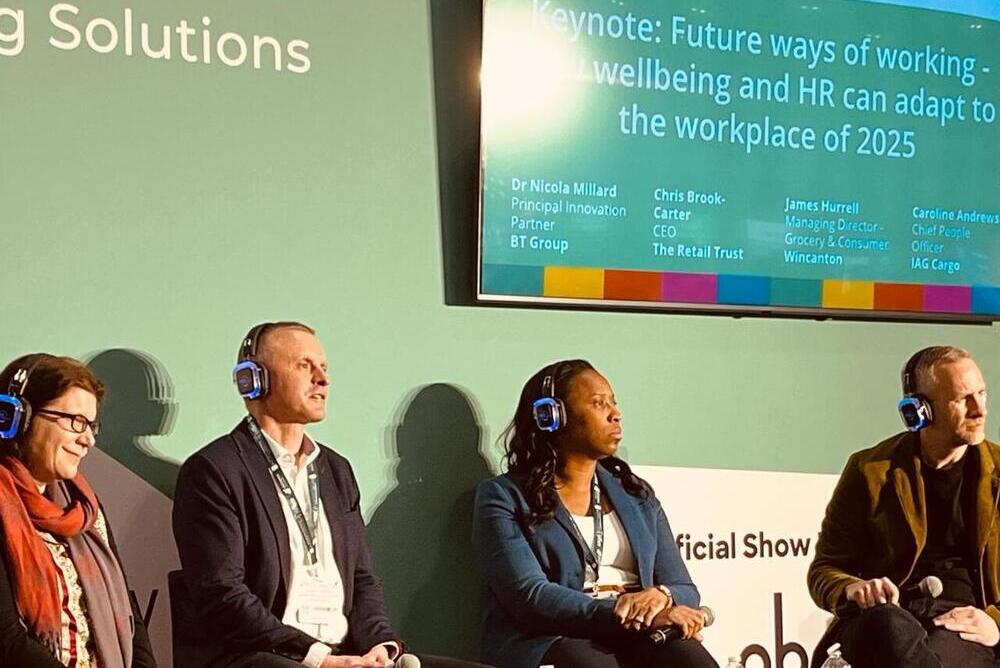
Watercooler Highlight: Future ways of working; how wellbeing and HR can adapt to the workplace of 2025
AXA Health’s latest UK Mind Health report reveals three key emerging themes.
First, the younger workforce continues to have the highest rates of loneliness and social isolation, and symptoms of stress, anxiety and depression. The good news is that a supportive, caring workplace environment and employee-manager relationship can have a positive impact on their wellbeing.
However, as the line manager’s role becomes more pivotal and all-encompassing, it’s crucial to protect them and ensure they’re well-equipped to help themselves and others.
Lastly, by offering a range of wellbeing support that reflects varying needs at different life stages, employers can help their people take care of their wellbeing and their loved ones.
Stepping up to respond to evolving needs
To understand more about these emerging trends and what employers can do to step up and respond to evolving needs, join Make A Difference in partnership with AXA Health and our panel of experts on Thursday 13th June from 12.30pm – 1.30pm for our free-to-attend, live, online roundtable including insights into:
- Connection and community: Supporting the needs of the younger workforce
- Empowering managers: protecting their mind health is crucial as the demands on “people” managers grows
- Family matters: redefining employer support beyond the office
Featuring expert speakers including:
- Heather Smith, Chief Executive Officer, AXA Health
- Paul Duggan, Global Health & Wellbeing Lead EMEA, Accenture
- Dr Jasmin Wertz, Assistant Professor, University of Edinburgh
- Kirsty McLean, Head of Wellbeing, Nomura UK
- Anna Cotgreave, Head of Reward & Benefits UK, Clifford Chance LLP
The content is designed for:
- C-Suite, HR, Benefits & Rewards, Health & Safety, Wellbeing and Occupational Health Leaders
- Talent, Engagement and Business Transformation Leaders
- Equality, Diversity & Inclusion Leaders
- Wellbeing Leaders and Champions
We look forward to seeing you there. If you can’t join us, go ahead and register anyway and we’ll send you the recording after the session.
You can find full details and register here.

Live roundtable webinar: Cultivating a caring workplace culture – nurturing mind health for all generations
The Watercooler Event 2024 brought together diverse minds from various corners of the professional world, each sharing insights into crucial aspects of modern work culture. Among the myriad of topics discussed, disability and wellbeing in the workplace took centre stage, offering a profound perspective on inclusivity and mental health support in professional environments. As a Gen Z attendee, I found the discussions enlightening and imperative for shaping the future landscape of work.
Embracing Accessibility: A Business Imperative
Isaac Harvey MBE (Director – Male Allies UK) – whose journey from London to Cambridge, the same week of receiving his MBE and attending Disability Power 100 – underscored the accessibility challenges faced by individuals with disabilities. The usual hour-long journey ended in a nine hour exasperating ordeal, simply due to a broken down lift. He described it as being ‘brought back down to the reality of accessibility and the challenges that we face’.
His experience highlighted the often-overlooked nuances of accessibility, from broken lifts to the need for accessible luggage solutions. Inclusive practices aren’t just ethical imperatives; they’re also good business sense. By embracing accessibility, companies not only foster a more diverse and equitable workplace but also tap into untapped talent pools and enhance their brand reputation.
From the Top Down: Training Managers for Wellbeing Support
The conversation shifted towards gaining organisational support for health and wellbeing initiatives, emphasising the importance of top-down commitment. Clare Kenny (Head of Wellbeing Strategy – PVL), Siobhan Bird (HR Lead – Knight Frank Promise), Ant Watson (Managing Director – Knight Frank Promise), and Sean Lofthouse (Senior Buildings Manager – Knight Frank Promise) emphasised the necessity of training managers to effectively support employees’ mental health.
The prevalence of accidental managers, lacking in the necessary skills to address mental health challenges, poses a significant risk to employee wellbeing. As someone who has experienced the consequences of toxic managerial practices firsthand, I resonate deeply with the need for comprehensive training and support structures for managers at all levels.
Harnessing AI for Wellbeing and Organisational Growth
Mariyana Zhou (Head of HR – 1 Inch Network)and Kevin Lyons (Senior HR Manager – Pearson) delved into the transformative potential of AI in supporting wellbeing initiatives and enhancing the employee value proposition. Their insights underscored the critical role of technology in driving positive organisational change, particularly as Gen Z and future generations enter the workforce. As digital natives, we refuse to accept outdated or inefficient technological solutions, pushing for innovation and optimisation in workplace processes.
After experiencing various organisational settings, it became evident how disconnected senior decision-makers in larger companies can be. Frequently, they strike deals on software and practices without soliciting input from those who will use them daily within the organisation. This results in the widespread use of outdated and inefficient software, with blame often unfairly directed at individuals instead of acknowledging the outdated systems in place.The contrast between decision-making processes in large and small organisations speaks volumes about the importance of organisational agility and adaptability in embracing technological advancements.
The Secret to Lasting Habit Change: Affordable Solutions for Wellbeing
Dr. Julia Jones (Author – The Music Diet, Neuron, F-Bomb) and Steph McGovern (Tv Presenter & Journalist) shed light on the secrets to lasting habit change, offering practical strategies for improving mental and physical wellbeing. Their emphasis on affordable, accessible solutions resonates deeply in a society grappling with the impacts of the cost of living crisis. In a world inundated with fad diets and expensive fitness trends, their approach champions sustainable, holistic wellbeing practices that prioritise individual needs and circumstances.
Navigating Generational Diversity in Workplace Wellbeing
Matt Elliott (Chief People Officer – Bank of Ireland) and Anna Hislop (Leadership Coach – Unfolding Success) also offered valuable insights into engaging a multi-generational workforce through wellbeing initiatives. They emphasised the crucial nature of prioritising employee satisfaction through wellbeing and flexibility, while also highlighting the importance of tailoring approaches to effectively manage the wellbeing of each generation within the workforce. This presents a challenge, as the needs and preferences of different generations may vary significantly. They stressed the significance of employee connection as a means to foster interest in wellbeing initiatives.
Acknowledging the unique experiences and challenges faced by Gen Z individuals, such as economic and social crises, Matt and Anna underscored the need for organisations to provide comprehensive support that extends beyond the workplace. This includes addressing mental health concerns and combating feelings of loneliness, which have become significant welfare issues.
They advocated for leveraging social media as a force for good, emphasising that Gen Z individuals are seeking meaningful work and are willing to leave positions that do not align with their values and aspirations.
As a Gen Z attendee, this perspective was refreshing, as social media is often cited for its negative impact on this generation. However, the positive impact of social media is often overlooked, as it has the potential to connect various members of an organisation and provide a platform to share crucial information regarding wellbeing.
Wrapping up
The Watercooler Event 2024 provided a platform for meaningful dialogue and actionable insights into the intersection of disability, wellbeing, and the workplace. As a Gen Z participant, I left the event inspired by the collective commitment to creating more inclusive, supportive work environments. Moving forward, it’s imperative that organisations prioritise accessibility, invest in managerial training, leverage technology responsibly, and promote holistic wellbeing practices. By doing so, we can pave the way for a more equitable, sustainable future of work, one that empowers individuals of all abilities to thrive and contribute their unique talents to the professional landscape.
You might also like:
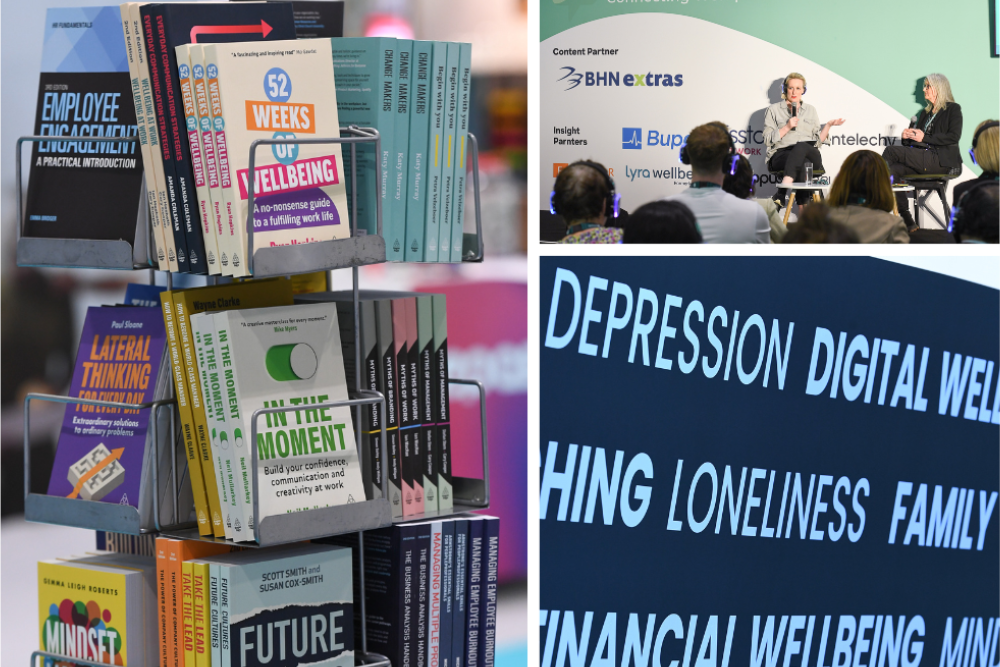
The Watercooler Event 2024 – A Gen Z’s Take: Disability, Wellbeing, and the Workplace
One of the standout sessions from this year’s Watercooler Event was entitled ‘Aligning HR, Reward and Wellbeing with the organisation’s commercial strategy’ because this covered three current “biggie” issues in employee health and wellbeing:
- The delicate balance of getting job design right so it stretches an employee to their peak performance without tipping them into overwhelm
- How you measure the impact of your wellbeing work
- The ethics of wellbeing
Job Design: how do we get the right, tricky balance?
While undoubtedly job design is a major factor influencing how an individual feels about their job, and their stress levels, panellist Stuart Hughes, IOSH President and Head of Health and Safety at Mercedes-AMG Petronas Formula One Team, was honest about the fact that job design must work for the organisation, not just the individual, and sometimes there may be tensions on this front.
He gave the clear example of his day job at Mercedes. “It’s very difficult to build a Formula One car from home, so you have to think about how flexible you can be an an organisation,” he said. “It’s that balance of how do you make things equitable for individuals and sustainable for organisations.”
As he explained, while you might not always be able to design the level of flexibility some employees want, what you can do is look at other ways you could build in good job design to “bring other impacts or benefits to the individual”. What you don’t want to do as an organisation, if you’re in Mercedes’ position where flexibility might sometimes be challenging is “be so agile and flexible that you stop hitting your purpose as an organisation”, say Hughes.
As often with wellbeing, it comes back to striking this delicate balance between the individual and the organisation. The challenge for professionals, as Hughes articulates, is to find “the sweetspot”. That said he doesn’t underestimate for one minute the huge impact that job design has on an employee’s wellbeing and calls on the audience to recognise its “massive significance”:
“The impact of job design on people’s mental health and wellbeing is massive and we need to make sure we’re designing jobs that people can come and can do, understanding what is stretch and what is too much within that design. You don’t want anyone to be flat and deflated from lack of stretch, and also you don’t want them to have so much stretch they are failing all the time and are hyper uncomfortable. That’s not an easy balance, but it’s possible.”
Fellow panellist Sabrina Robinson, Wellbeing Lead, Essex County Council, rightly points out that the other thing about job design that is so tricky is that it touches on so many different parts of the business. It’s also challenging in an organisation like the Council where there are so many different roles. “And with that comes different design for different roles,” she says. For her the key questions are around ‘what do we need people to do?’ and ‘how are they going to be supported doing that’. “And that’s why as a subject matter expert in workplace wellbeing within our organisation, I can’t do this all on my own; I have to work with colleagues across HR and business partners, etc, wellbeing has to be woven into all those different elements of a business and that obviously touches on job design as well”.
Measuring the impact of wellbeing work; have we got the focus wrong?
You need to think about evaluation and measurement at the very start of any wellbeing work, not after, said Sabrina, Council, conceding for many organisations, like her own, this is “really tricky”. She went on to explain the Council largely does this through feedback from employees, both quantitative and qualitative data.
“But we’re always looking at it in new, innovative ways,” she added. “I’ve got a colleague who’s just started looking at work anniversary surveys, for example. So, each year that someone has been within the organisation, they are able to give personalised feedback to us about the things that have been working for them, and things that haven’t.”
The council is also currently looking at a ‘Wellbeing Index” gathering all performance and engagement data, along with feedback from employees. One of the major objectives of this type of tool is that leaders can see where their teams’ wellbeing sits across the whole, diverse organisation. “We need to be able to support our leaders and our functions to assess themselves against where they are, with our strategic approach, and what good looks like,” she said.
But Aggy Dhillon, Head of International Reward & Wellbeing at Twinings spoke for many when she was honest about the fact that “we do actually struggle to prove ROI”. As she said, theoretically it would be “great” to measure employee wellbeing against Twinning’s wellbeing strategy, which consists of four pillars, but she’s not there yet – as many organisations aren’t. “That’s one to work on for us and honestly an area we’ve struggled a little bit with,” she said.
Hughes, however, had a completely fresh take on the admittedly “challenging” topic of measurement, telling how a chat with one if his directors had prompted him to have a complete mindset change on measuring wellbeing work:
“ROI is a really interesting concept in this space. This director said to me ‘well, if this work just helps one person, then it’s paid for itself’. And that really changed my mindset because it basically made me look at it from an impact perspective and the difference it makes to people, rather than trying to identify if we get our ‘pounds and pence’ back. Because, ultimately, if our people are well, healthy, able to thrive and perform at their best, we’ll get that return on investment.”
The ethics of wellbeing; the wider mission of wellbeing
Building on Hughes’ words about the impact of wellbeing led to a panel discussion on how wellbeing professionals need to bear in mind, not just the ‘pound and pence’, but also the wider societal impact their work is potentially having.
As Sabrina said, the Council’s mission is not necessarily to “look at return on investment” but to look at “how are we really affecting people’s lives?”. It strives to treat its Council residents and employees with the same grace and care. The Council’s whole outlook, including how it treats its staff, is affected by the fact that it’s looking to positively affect lives “from the point someone’s born, right to the end of life”.
She added:
“It’s about embedding wellbeing exactly as we would with our residents. Ultimately, it’s about that end goal of ensuring that our residents have the best possible services delivered by people who are well productive and engaged within their roles.”
Hughes, too, touches on a strong sense of responsibility he feels in his role in wider society, not just within his organisation. For him, what Sabrina touched on here is “fostering a culture of care within organisations and delivering sustainable performance”. With his IOSH presidential hat on he wants to see a “world where organisational success doesn’t come at the expense of the employees”.
But he goes further than that with his calls for the industry to focus on “driving positive societal impacts through good IOSH practices”. Just as the Council views its employees in a similar way to its residents, in terms of striving to deliver them the best experiences, this is also how Hughes views the wellbeing mission of companies:
“We want to get the best out of our people by investing in them, not just a work but beyond work. We want to make sure they’re valuable members of society, make sure they can serve their families, their friends, their loved ones… Working in this industry is a longterm game and you need to think of the ‘compound’ interest that you get over a life cycle as it’s often the small decisions that you make that make a difference.”
You might also like:
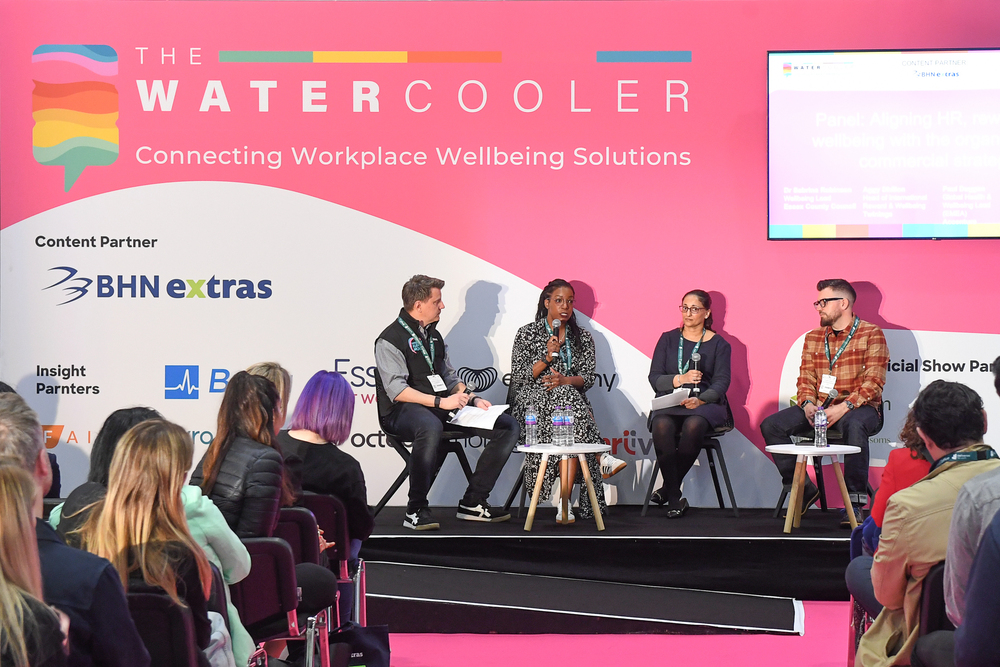
Watercooler hot topics: job design, measurement and the ethics of wellbeing
One in three UK employees in the UK are over the age of 501, but a large proportion of this generation are being overlooked for workplace skills training opportunities and are being locked out of opportunities to upskill and re-skill in today’s rapidly evolving workplaces.
Over half of over 55s haven’t received any management or leadership training in their current role. Employees in the 23 – 38 age bracket were most likely to have participated in management and leadership training in their current role, with two thirds (67%) having received training to support the development of their management or leadership skills in their current job.
Over half of over 55s (55%) haven’t received any technical skills training on how to use digital tools and technologies, such as ChatGPT, from their employer in the past twelve months. This is over twice the number of younger adults aged 18 – 25 (27%) who haven’t received training in these critical areas in the past year.
The findings are from Corndel’s Workplace Training Report 2024, based on research conducted with 1,000 UK employees and 250 HR decision makers at large organisations2.
Furthermore, employees aged over 55 are also least likely to have received workplace training around ‘human’ management skills, such as empathy, mental health awareness and emotional intelligence, with only 25% who have received training in these areas in comparison to an average 39% across all age groups.
Over 55s value professional development and aren’t confident in their current skills set
Over half of over 55s (54%) say professional development is an important factor in their decision to stay with an organisation, suggesting employers need to shift their thinking around offering training and development for employees who are in their fifties and over. Worryingly, one in five over 55s (19%) don’t feel confident enough in their current skill set to find new employment or pivot their career if they were to lose their current job. In contrast, less than one in ten (8%) under 55s didn’t feel confident in their ability to find a new job or pivot their career with their current skill set.
James Kelly, co-founder and CEO of Corndel, said: “Skills power people and power organisations. Without providing access to adequate training opportunities, we are not allowing this group of the workforce to thrive. And businesses are potentially losing out on the huge value that this experienced group of the workforce can add if they have equal access to ongoing technical and management skills training.”
“Continuous learning and upskilling needs to be embedded into the UK’s workplace culture. In an era of the great ‘unretirement’, with thousands more over 55s working longer than ever before, alongside a time where both technology and working practices are evolving at lightning speed, people in all roles, at all levels of seniority and across all age groups should have the opportunity to enhance their skills and learn new skills to prosper in today’s workplace.”
Over 55s case study: Robin Razzell, Data Analyst at Mitie Energy
Robin Razzell is a highly experienced commercial project manager with a 24-year career spanning engineering, retail, and IT systems development and is currently a Data Analyst at Mitie Energy. Robin is currently enrolled on the Corndel and Imperial College London Data Analyst programme.
Robin says: “I’m a believer in lifelong learning. Twenty or thirty years ago, career progression by the time I got to my level often plateaued. However, now, unless you are staying ahead of the curve, you essentially become redundant, because the environment in which we work is moving forward so quickly. If you want to remain relevant to the workplace, you must upskill, it doesn’t matter what age you are. Without that upskilling, you will shortly find yourself sidelined and of no more use if you’re not educated about the current trends in the workplace environment.”
2 Opinium Research conducted an online poll on behalf of Corndel with 250 HR decision makers in organisations with 250+ employees and an online poll with 1,000 UK employees on 7th to 11th December 2023.
You might also like:

Report highlights the need to ensure skills training of over 55s isn’t overlooked
Last week, Prime Minister Rishi Sunak announced plans to combat ‘sick note culture’ by reviewing the fit note system for people who aren’t well enough to work.
Part of the plan is more “objective assessment” by unspecified “specialist work and health professionals” rather than GPs.
Commenting yesterday, at our sister event, The Watercooler, on the PM’s speech, Rosena Allin-Khan, Labour MP for Tooting and former shadow cabinet minister for mental health said: “This is why the public don’t have any trust in politicians – they seem to be out of touch, they don’t seem to come from our world [or] be relatable in any way. They don’t seem to be people who get what it’s like not to be able to get out of your bed, put your clothes on, brush your teeth and go to work because you are struggling, because you’ve been on that waiting list for three years, because you can’t get the help that you need”.
Mr Sunak’s argument is that his plans would not lack compassion as there would still be a safety net for those who genuinely need it.
Here two experts share their feedback to the PM’s plans.
Nick Pahl, CEO, Society of Occupational Medicine (SOM)
The Society of Occupational Medicine (SOM) is calling for a review of fit notes by health professionals that are also trained in occupational health. Nick Pahl, SOM’s CEO, said:
“As the PM states, the fit note is not used to its full potential, and SOM would like to see a number of actions taken”. These are:
- Comprehensive training in fit note use, combined with occupational health training, in clinial and medical curricula.
- Fit note certification acting as a triaged referral point to an occupational health professional to support return to work. Lack of skills in occupational health (OH), are barriers to using the fit note to its full potential in general practice.
- Only 50% of UK employees have access to OH and the Government needs to fund OH to support people with health issues to stay and return to work.
He added: “Fit notes generally focus on the ‘not fit’ for work option, rather than the ‘maybe fit for work’ section. Statistics show that over a third of fit notes are issued for five weeks or longer, by which time around 20% of people will never return to work”.
“Through no fault of their own, people seeing their GP team often expect an all or nothing ‘sick note’. This makes it harder to manage expectations and come to a shared decision about using the ‘may be fit for work’ option.
Discussing the merits of the ‘may be fit for work’ section, or a shorter review period before reassessment can be perceived as punitive by patients who expect to get ‘signed off’ and find it difficult to understand why their GP team would challenge this. That is why SOM is calling for tailored occupational health advice to be made available to patients who receive the fit note – with better use of the ‘maybe fit’ for work section.”
Karl Bennett, Wellbeing Director, Vivup and Chair of the EAPA
Taking a different perspective, Karl Bennett, Wellbeing Director of Vivup and Chair of the EAPA said:
“It’s incredibly insulting to assume that people are visiting their GP to be signed off with mental health issues, and that this is taking time away from GPs doing other work”.
“The issue is not having the capacity to issue ‘fit notes’, it’s having the resources available within the NHS to support those people when they are at their most vulnerable”.
“It takes courage to ask for help if you are struggling with mental health issues. Visiting a GP may be a last resort for some, so investment is needed to support people, rather than increase access to fit notes”.
“When will the government recognise that support is available through Employee Assistance Programme services? EAP’s offer everything that is needed to support people to remain at, or return to work quickly. All employees should have access to the services offered by an EAP, while employers should have funding made available to them to ensure they are not choosing between their employees’ mental health and paying a fair wage”.
“This also demonstrates the support needed by employers to help employees recognise when they are feeling low, and have in place the tools needed to support mental health issues. This includes regular training for managers around the services available to their teams and focus on organisational culture – which needs to be one of inclusiveness without fear of consequence when asking for help”.
You can view the PM’s speech in this BBC report and the full Government press release can be viewed here.
You might also like:

Experts share commentary on the PM’s plans to review fit notes
AI has been one of the hot topics at this year’s The Watercooler event. As proof of its power and role in productivity if used as a helpful adjunct, this feature brings you key insights from some of today’s sessions cherrypicked by transcription service Otter.ai…
It seems fitting to start with the session on the ‘Future ways of working’ because this session’s final conclusion (according to Otter.ai) was about the importance of integrating AI. We need to recognise, said Otter.ai, “its impact on employee wellbeing” and “the need to educate workers on its benefits and [ability to] automate routine tasks to create more engaged and healthier workforces”.
Note: while Otter.ai did an overall good job of summarising these sessions, human intervention was still necessary to add context and, sometimes, better grammar so that the notes made full sense!
As this first session below also concluded, organisations are best using AI “to complement human work, not replace it”.
Key takeaways: Future ways of working – how wellbeing and HR can adapt to the workplace of 2025
- In the new world of work, employers need to work hard to ensure employees have an emotional connection with the workplace
- Employers also need to have inclusivity at the top of the agenda when considering hybrid working
- Employees need to be involved in enhancing their own wellbeing (ie. it can’t just be seen as an employer’s responsibility; it’s a dual responsibility)
- It’s important in a hybrid working world that leaders become adept at, and trained in, managing tensions; leadership skills are crucial for organisations to navigate the future of work effectively
- Hybrid work models are challenging for leaders to manage, particularly when team members are not physically present
- Authenticity will become more important as AI is adopted more
Key takeaways: Wellbeing washing – where does the responsibility for employee wellbeing lie?
- ‘Wellbeing washing’ was defined as when organisations promote themselves as prioritising employee wellbeing, but this doesn’t match the actual experiences of employees. This leads to employees feeling unsupported, despite good intentions, and the creation of a ‘tick box’ culture
- Panel agreed that wellbeing washing is a spectrum from toxic cultures to excellent provision, with many organisations sitting in the middle
- It’s crucial to address organisational toxicity if an employer genuinely wants to support employee wellbeing and key challenges can be identified through analysing people data like attrition and productivity data
- Employers must take ownership of the wellbeing agenda and involve everyone in wellbeing initiatives; ownership and accountablity for wellbeing strategy is crucial for success
- Concerns were aired about the accountablity for wellbeing and the importance of leadership involvement with wellbeing strategies; leadership often underestimate their role in wellbeing and it’s a journey to involve them more
- Organisations are increasingly shifting from a reactive to proactive approach, as well as a more tailored approach to individuals
- Wellbeing strategies can be clearly linked to KPIs and measurable outcomes (case studies on Unilever, GSK and Johnson & Johnson mentioned)
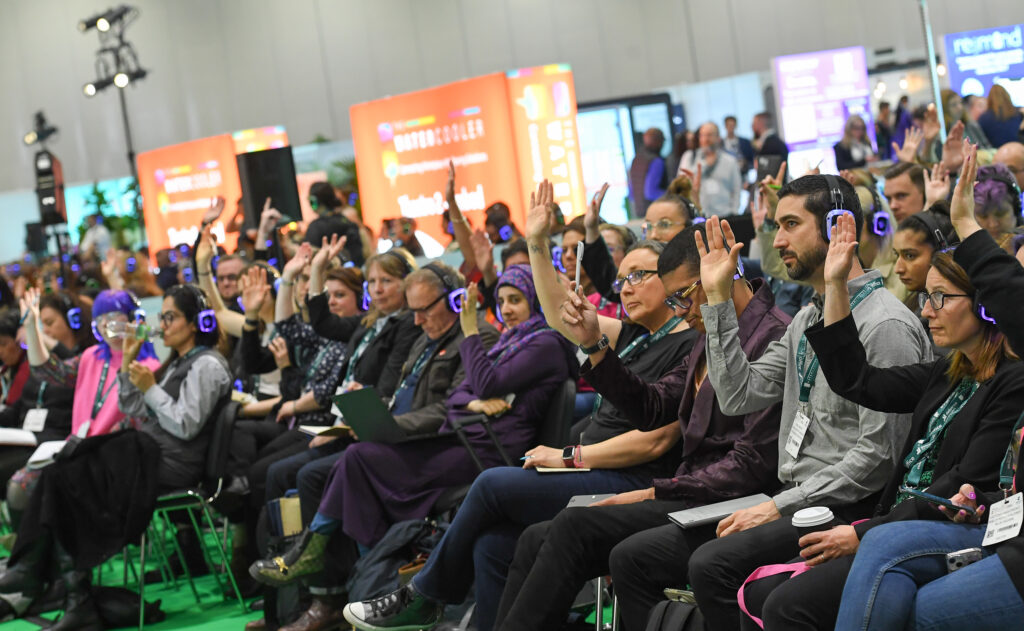
Key takeways: How to tackle wellbeing challenges and improve engagement through flexible working practices
- Inclusive design and co-creation of spaces with employees are crucial to success and directly impact an organisation’s culture and operations
- It’s vital to really understand employee needs and tailor solutions to these needs, with them
- For this understanding, talking to employees in person is key to build trust and demonstrate commitment to employees, as is having an inclusion and diversity focus
- Employers could adopt a pilot or ‘test and learn’ approach to flexible working initiatives, so they can start collecting metrics and evidence to measure the impact on things like engagement rates, sickness, absence, etc
- Organisations should empower teams to define what ‘protected time’ means for their roles and ensure that this consultation is done with an employee-led approach; don’t make assumptions about what they want
Key takeaways: The Future of the Employee Wellbeing Profession
- In the evolution of the profession evidence based approaches are crucial
- The profession requires continuous learning and staying up to date with the latest research and trends, as well as embracing change and the use of realtime data to drive positive change
- One option to continuously learn and progress a career in this industry – as talked about by panellists – is a Master’s degree in Workplace Wellbeing at the Universirty of Nottingham
- Other ways to keep up to date include reading new research, including academic papers, and connecting with other professionals in the field, as well as being connected to training organisations like CIPD
- Learning can also happen via getting feedback from employees and being curious and reflective
- In progressing in the profession, there’s huge value in sharing knowledge and research across the industry, as well as offering mentoring and support
- Health and safety skills and qualifications were cited as valuable ways to secure Occupational Health roles – health and safety professionals with risk assessment and control skills were also noted to be in demand generally
- Organisations could consider creating a ‘wellbeing book’ for managers, aligning with ISO standards, to promote knowledge and culture change, and inform employees about what the profession does
- It’s important going forward that wellbeing professionals are seen as strategic partners, not event organisers
- Professionals need to be able to link wellbeing support to performance with data to demonstrate this link
You might also like:
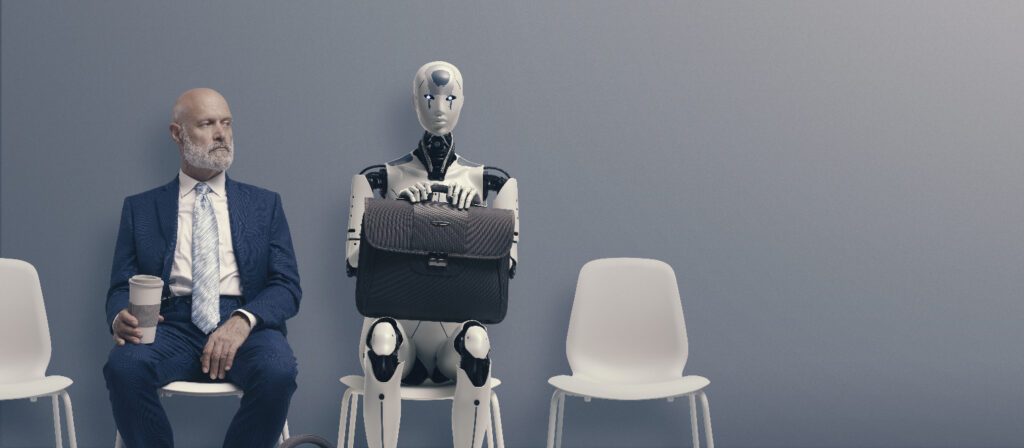
Watercooler Day 2: Key takeaways (powered by AI)
After a busy first day at The Watercooler and The Office events, here’s a roundup of five key insights I’ve taken away from sitting in on Day 1 sessions, side-conversations and our Leaders’ Lunch.
Hard to reach, or hardly reached?
Many are still struggling to support all those who need help. The panel members for the session “Aligning HR, reward and wellbeing with the organisation’s commercial strategy” all agreed that this was a key challenge and it was a recurrent theme in discussions across the day.
The comment that struck me the most around this issue was from Dr Sabrina Robinson, Wellbeing Lead with Essex County Council. When asked what she was doing to reach the “won’t and don’t” group she explained that whilst people talk a lot about the “hard to reach”, she prefers to us the term “seldom heard”. It’s not that these people aren’t giving their voices. The problem is that we’re not always able to find the right mechanisms to listen to them.
Change is the only constant
Ongoing transformation is something we’re seeing everywhere. Learning to deliver wellbeing within that context rather than in a static manner is increasingly important.
Job design, organisational design and workplace culture are fundamental
To what extent does our work and how we design it have an impact on wellbeing? Whilst we’ve been talking about the imperative of creating workplace cultures that underpin employee health and wellbeing for a while, now “job design” is cropping up regularly in conversations.
When so many are going through transformation and change and revisiting organisational design, this is the opportunity to embed employee wellbeing through job design from the very starting point.
The balance is how you make things equitable for individuals and sustainable for organisations. “I think if you can marry those two things up, you’re probably in the sweetest spot that there is” explained Stuart Hughes, President of IOSH and Head of Health & Safety at Mercedes-AMG Petronas Formula One Team.
As part of this, we need to make sure that we’re designing jobs that people can do, so that they aren’t failing all the time, but that also stretch and allow them to grow. Giving people autonomy and control over what they do day to day in their role, through job and organisational design, is also key.
Are there too many cooks?
Whilst some organisations are making great progress when it comes to taking an integrated approach to supporting employee health and wellbeing, others are still struggling to connect the dots.
“There are too many cooks” was one attendee’s simple summary when we asked the Leaders’ Lunch guests to share challenges they’ve encountered around the growing intersection between DEI and employee health and wellbeing.
When pushed to expand she explained that in her experience HR, DE&I, Wellbeing, Benefits, Occupational Health, Learning & Development, Employee Experience are all working too much in isolation. More collaboration is needed to ensure health and wellbeing support is inclusive, proactive and has a real impact.
What success looks like
Many are using 2024 to redesign their wellbeing strategies, recognising that they need a well thought out strategy, rather than adhoc interventions.
When asked “What does success look like?”, Kris Ambler, Workforce Lead, Policy and Public Affairs from the British Association for Counselling and Psychotherapy (BACP) summed it up, saying: “Think about why you need what you need. What you need has to be articulated in a strategy. Put that in place first”.
For another packed day of insight and inspiration, join us today at The Watercooler and The Office events at ExCel. You can find out more and register here.
You might also like:
